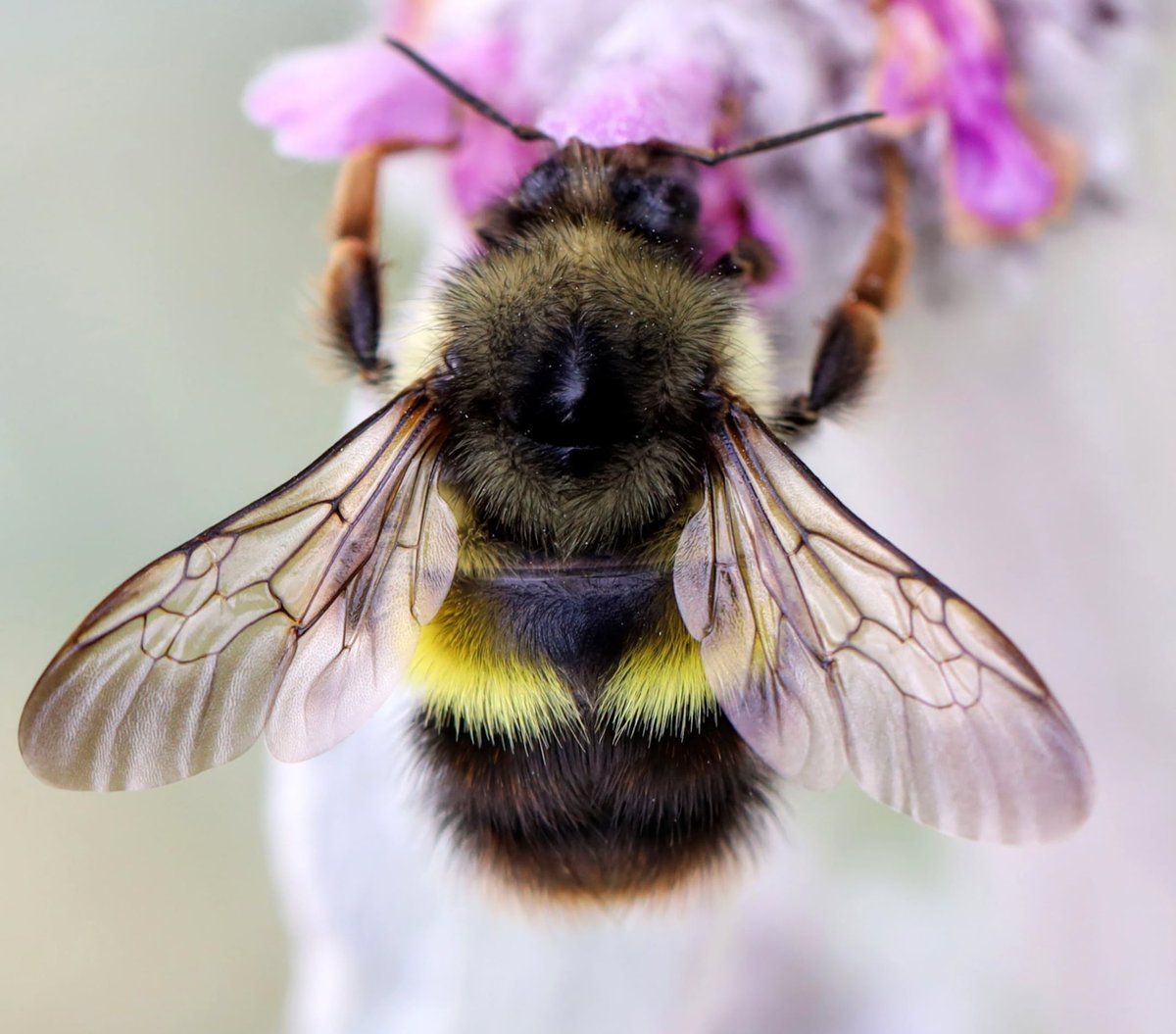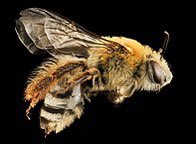
While I FW her love of bees and respect her obvious skills in apiary—her use of “saving the bees” hits me wrong.
She’s saving the bees in the same way raising cows is saving bison.
She’s saving the bees in the same way raising cows is saving bison.
Honey bees aren’t native to the US. Afak the first honey bees came to the NA with colonizers. Before the honey bee and Europeans showed up, there were as many as 4000 species of bees here, many specialized to fill certain niches in the NA ecosystems.
Various types of native bees include mason bees, sweat bees, bumble bees, carpenter bees, etc etc.
The majority of them are solitary, rather than social/colonial.
The majority of them are solitary, rather than social/colonial.
The smallest North American bee is the ‘Perdita minima’—an itty bitty solitary bee. They often build homes in desert sands and are so small that their shadows are easier to find than the bees themselves 😭
📸 — John S. Ascher
📸 — John S. Ascher

At the other end of the size spectrum we have the Virgina carpenter bee (Xylocopa virginica). They eat a cavity in soft wood creating a teeny family home for the year 😭
Pic 2 — Perdida m. next to a carpenter bee
📸—Tony DiTerlizzi; Stephen Buchmann

Pic 2 — Perdida m. next to a carpenter bee
📸—Tony DiTerlizzi; Stephen Buchmann


Perdida m. are specialized to pollinate desert wildflowers in the southwest
Carpenter bees are generalists, using buzz pollination to vibe dry pollen off flowers 🤘🏽Occasionally these big bois will nectar rob flowers that are too small for their beefy body.
Carpenter bees are generalists, using buzz pollination to vibe dry pollen off flowers 🤘🏽Occasionally these big bois will nectar rob flowers that are too small for their beefy body.
Below is the southeastern blueberry bee (Habropoda laboriosa)—they only active for brief parts of the spring where they efficiently harvest blueberry, eastern redbud, azalea, and clover; pollinating the plants as they go. 



In terms of social behavior honey bees are social year round where as bumble bees are only seasonally social. A BB queen will overwinter alone before laying a new hive.
📸 - La4bonte
📸 - La4bonte

It’s incredibly important to say that honey bees directly compete with native bees.
Nectar is a limited resource, especially when it comes to specific plants that some specialized bees rely exclusively on.
Nectar is a limited resource, especially when it comes to specific plants that some specialized bees rely exclusively on.
Honey bees are notorious over harvesters due to the fact that they are bred to over produce honey. They produce honey for themselves AND for our consumption.
This competition can destabilize ecosystems where native keystones are still present.
At the end of the day, honey bees are domestic livestock and native wild bees are wild animals in need of saving.
It’s important that we be discussing them as such.
Read more below scientificamerican.com/article/the-pr…
It’s important that we be discussing them as such.
Read more below scientificamerican.com/article/the-pr…
Addendum: I just learned about melipona, sometimes referred to as the Mayan Honeybee, a selectively bred stingerless bee that produced a thinner honey, used extensively for generations in pre-settler Central America.
📸 — USGS
📸 — USGS

Sugarcane fields/plantations displaced its regional use, since these bees produce relatively little sweet for a high amount of work (compared to the cane). Over the years their populations have plummeted.
Being a selectively bred bee that resides in logs/hollowed out trees they seem to blur the line between feral and wild that I find incredibly interesting.
Damn turns out Ol Girl a Trumper and has been accused of setting up these scenarios. Allegedly she has unleashed her hive of fellow colonizers on the folks who have criticized her practices 

This is the final word
Last thing: if any bee specialists/biologists/invert ecologists (not beekeepers) have anything to add to the thread or correct comment or QT!!
Here’s a great piece by @AratiKumarRao india.mongabay.com/2021/03/no-hon…
• • •
Missing some Tweet in this thread? You can try to
force a refresh







